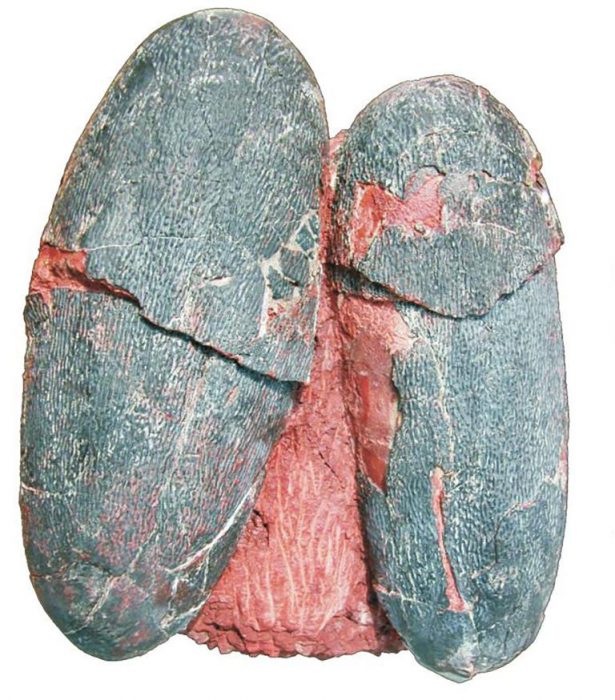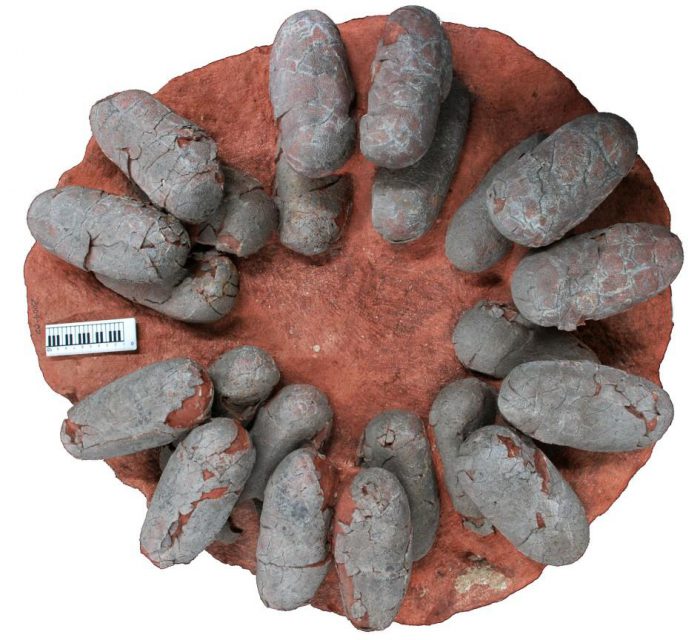For about twenty years now, paleontologists and other researchers have been pecking away at the idea that dinosaurs aren't really extinct.
No, we don't mean that there are gigantic reptiles still living on some remote tropical island.
(Although, yikes, is that guy ever adorable!)
Instead, we're referring to the theory that dinosaurs evolved into birds. From feathers found on tyrannosaur and raptor fossils, to their similar bone structures (such as the wishbone), to ancient dinos that look nearly identical to current flightless birds, the evidence is growing all the time.
And here is yet another fantastic piece of the dinosaur-bird puzzle.
Blue eggs. From a dinosaur.
Just so you know, you got that from me
An emu chick next to an unhatched egg. (Getty Embed)
Scientists have always know that dinosaurs laid eggs, just like all modern reptiles. But until now, they assumed that they were all white. That's the case with all modern reptiles, as well as most birds.
Of course, there are also birds, such as robins and emus, that lay coloured or speckled eggs. It was commonly thought that this trait came long after dinosaurs died out. But thanks to a remarkable fossil from China, it seems that this too was passed on from ancient reptile relatives.
The eggs belonged to an oviraptor called Heyuannia huangi. Its eggs were believed to have been a deep blue-green colour.
True blue

(Tzu-Ruei Yang/Paleowonders Museum of Fossils and Minerals, Taiwan)
You might be wondering why it took so long to discover that dinosaur eggs could be blue. Don't you just, you know... look at them?
But the issue here is that eggs change colour all the time due to fossilization. So eggs that look black or brown—or even dark blue now—were likely white when laid. We can't trust what we see with our eyes millions of years later. However, tests run on these eggs revealed two pigments: biliverdin and protoporphyrin. These are also found in modern coloured bird eggs.
Shade of blue, can't see you
So aside from this being yet another example of a trait passed from dinosaurs to birds, what does the colour blue (or green) in an egg mean?
The green colour of these cassowary eggs help camouflage them from predators. (Getty Embed)
Paleontologists can't know with 100% certainty, but they can look at modern birds with the same or similar traits, such as emus and cassowaries. These birds have exposed ground nests. This means they do not sit on their eggs and leave them at prime munching level for all kinds of animals. The colour helps to protect the eggs by camouflaging them.
Another thing about animals with blue eggs? They tend to be good daddies. Male emus, ostriches, and cassowaries are all fierce protectors of their nests. Were daddy Heyuannia huangi the same?
Sure, researchers can only guess as to whether one of these oviraptors could win the title of Cretaceous Father of the Year. But there's no doubt that when it comes to dinosaurs and birds, the links between them are many and growing.
And that's nothing to feel blue about.
 This fossilized clutch of blue eggs has amazed researchers. (Tzu-Ruei Yang/Paleowonders Museum of Fossils and Minerals, Taiwan)
This fossilized clutch of blue eggs has amazed researchers. (Tzu-Ruei Yang/Paleowonders Museum of Fossils and Minerals, Taiwan)










🙄 🙄 🙄 🙄 🙄 🙄 😆 😆 😆 😆 😆 😆 😆 😆 😳 ❓ 😀 😀 😀 😀 😀 😀 😀 😉 😉 😉 😉 😉 🙂 🙂 🙂 🙂 🙂 😛 😛 😛 😛 😛 😛 😮 😮 😮 😮 😮